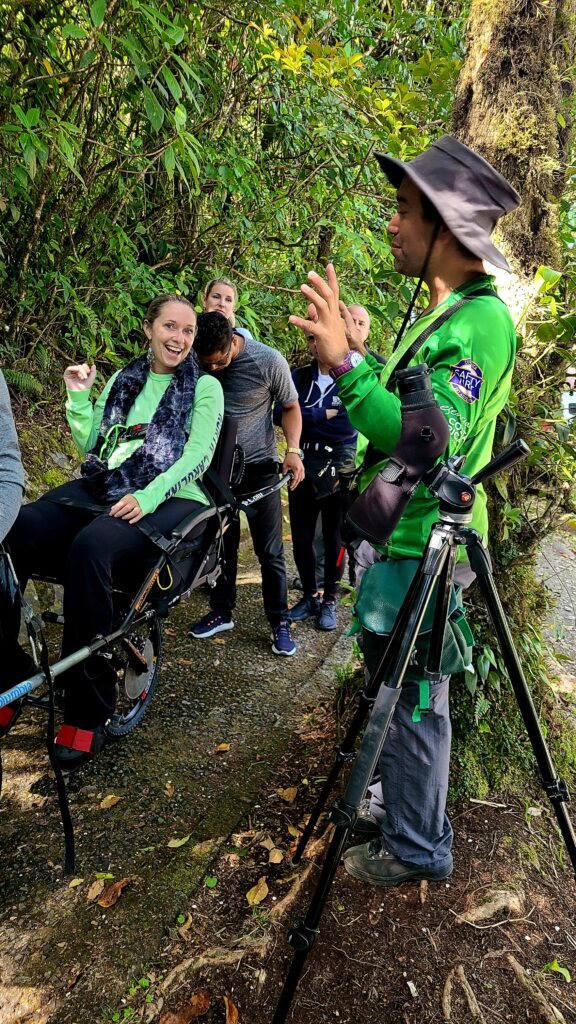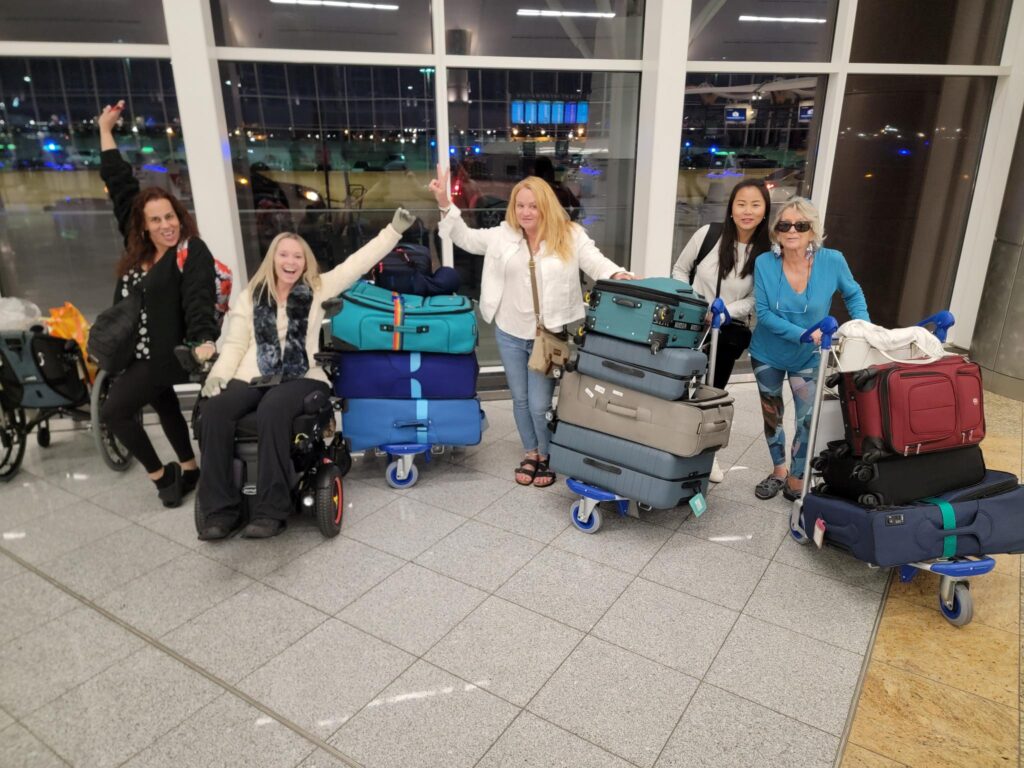
If you are a power wheelchair user then you are probably cringing at the title of this article as there is a 50% chance if you fly this has happened to you. If you are not a wheelchair user, think about this:
How would you feel if the airline decided to take a baseball bat, however unintentionally, to break your legs after you get off a flight? Well, this metaphor is akin to what many of us wheelchair users feel like when we see our power wheelchairs (our legs) broken into pieces when departing off the plane down to the luggage carousel to pick up our metaphorical legs.
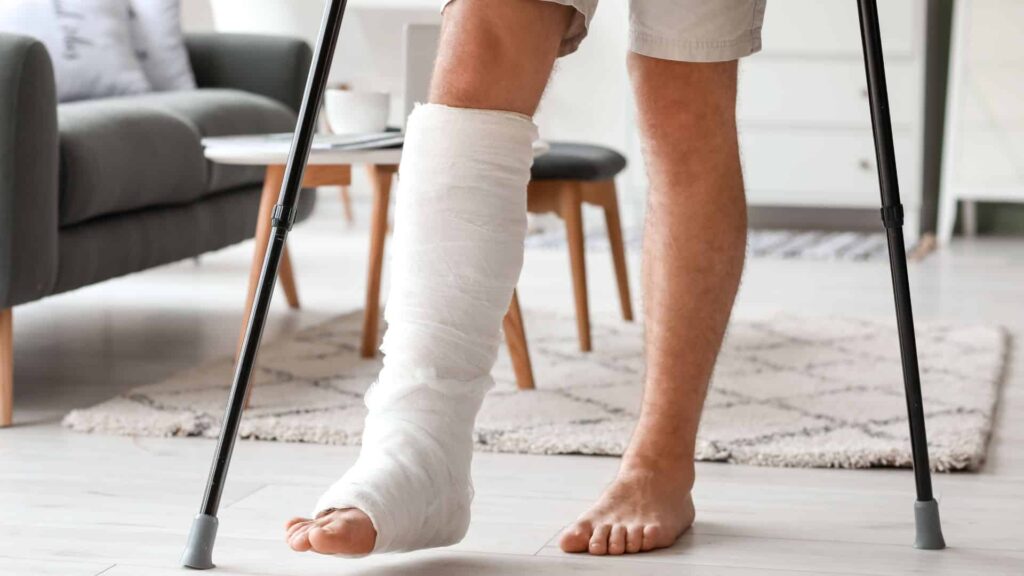
To say you would be irritated is a gross understatement.
Sadly, this happens way too often in the airline industry for a variety of reasons. In my humble opinion, I think it’s cheaper for major commercial airlines to pay for a few power wheelchairs throughout the year than train their staff properly, or rather the third-party contractors who they work with to deal with loading and unloading our wheelchairs. Let’s not even get into TSA and what they do with our chairs.
This is a major issue in the disability community in 2023 – accessible and safe airline travel. Hundreds of individuals have reached out to me after my experience I recently had on my international trip back from Costa Rica. This statement completely disheartened me “Ali, this is why I don’t fly.” This is heartbreaking because I want so many of us with different access needs to be able to experience the world, but if we are scared that our “legs” have a 50/50 chance of being broken at the end of the journey, is the risk worth it? Debatable for most.
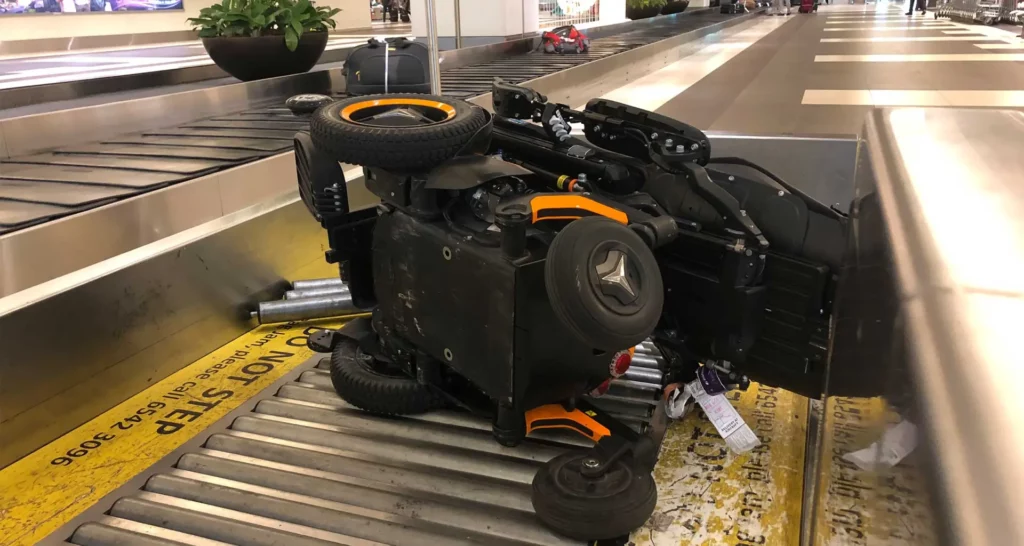
Mitigating Risk
I am of the mind that it is the partial responsibility of the wheelchair user to be able to break down your wheelchair to the best of your ability, build boxes, straps, wrap it up or whatever technique you may use based on your wheelchair type. Even if airline folks were skilled at loading wheelchairs onto planes there are so many varieties of wheelchairs that we do need to take our own precautions to ensure safety.
I’m an over planner. I’m an over thinker. I research consistently. My last major international trip was in 2013 when I was headed over to China for spinal surgery. I had my uncle quite literally build a cardboard box that you could lift on and off my wheelchair when flying with Korean Air. It was quite seamless and I didn’t think airline travel was that problematic.
I’ve traveled a lot since, but I’ve usually taken my foldable manual wheelchair on the airline. Under the Air Carrier Access Act the airlines are required to put this foldable chair inside the cabin inside the plane. If there is no inside cabin, then they are legally required to strap it to the back of the chair and kick out a passenger in short. They did try to put mine below and I actually held up the flight for them to go get it. I don’t think they were best please, but I didn’t care.
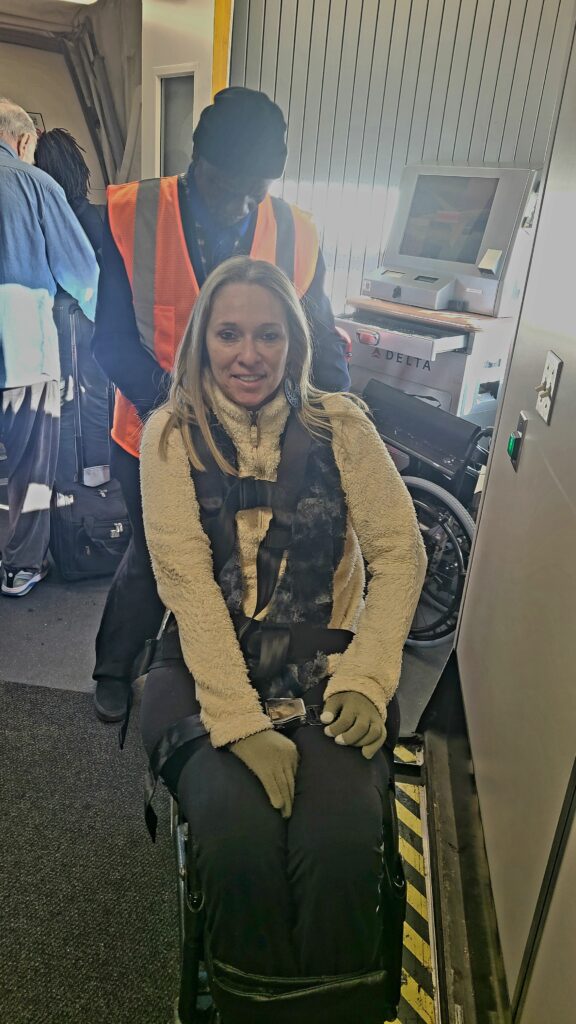
It is tremendously uncomfortable for me to take a trip in my manual wheelchair as a C6 quadriplegic because my power chair alleviates many secondary complications and pain issues I have.
When I was planning my 40th birthday trip to Costa Rica for 16 days, in no uncertain terms, I really wanted to be able to take my power wheelchair. I’m fortunate enough to have been able to take my foldable manual chair just in case any accidents occurred with damage of my wheelchair.
So, I set out on a herculean mission and had my uncle, father and my durable medical supplier (Stalls Medical in North Carolina), to help me create a strategy to minimize potential damage of my power wheelchair.
We created a sturdy cardboard box for the power controller, velcro straps to keep everything together, and industrial shrink wrap like the use for furniture moving. I even strapped up the foot plates together. I could not envision how they could possibly destroy chair with the way I created this structure. Honestly!
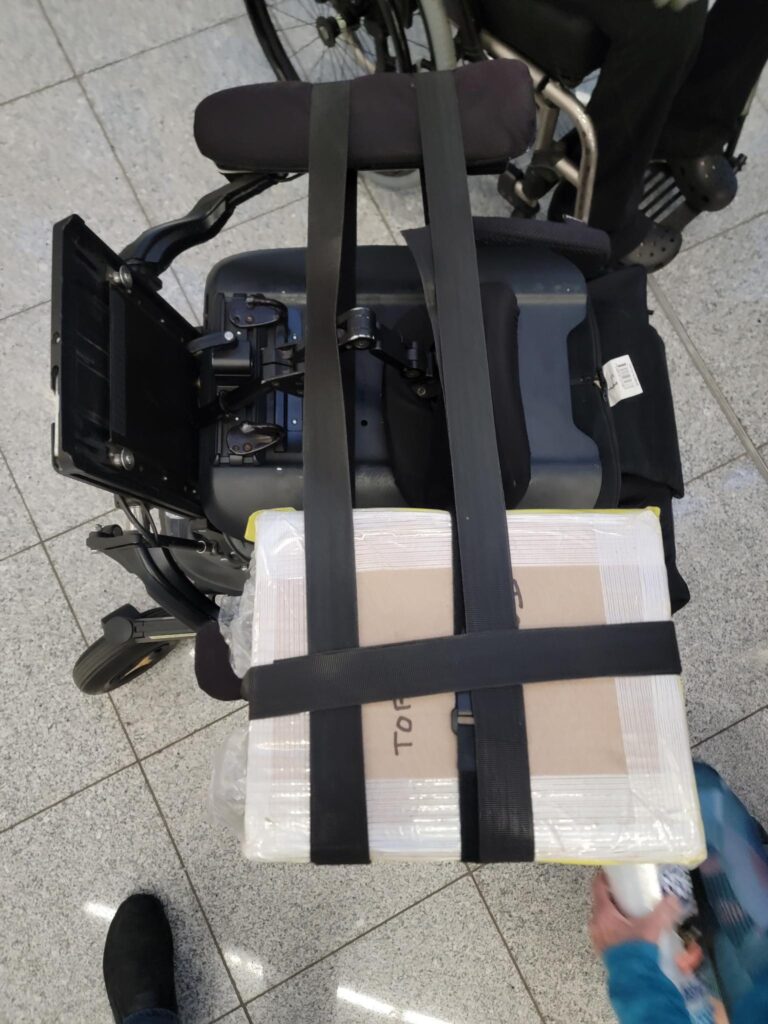
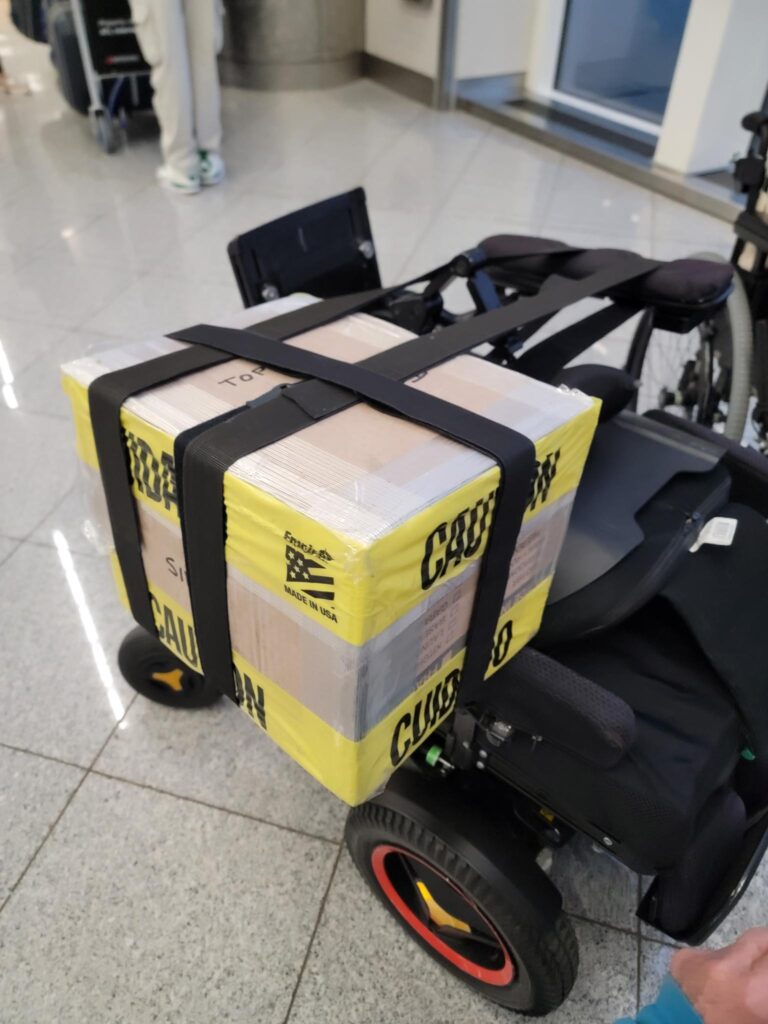
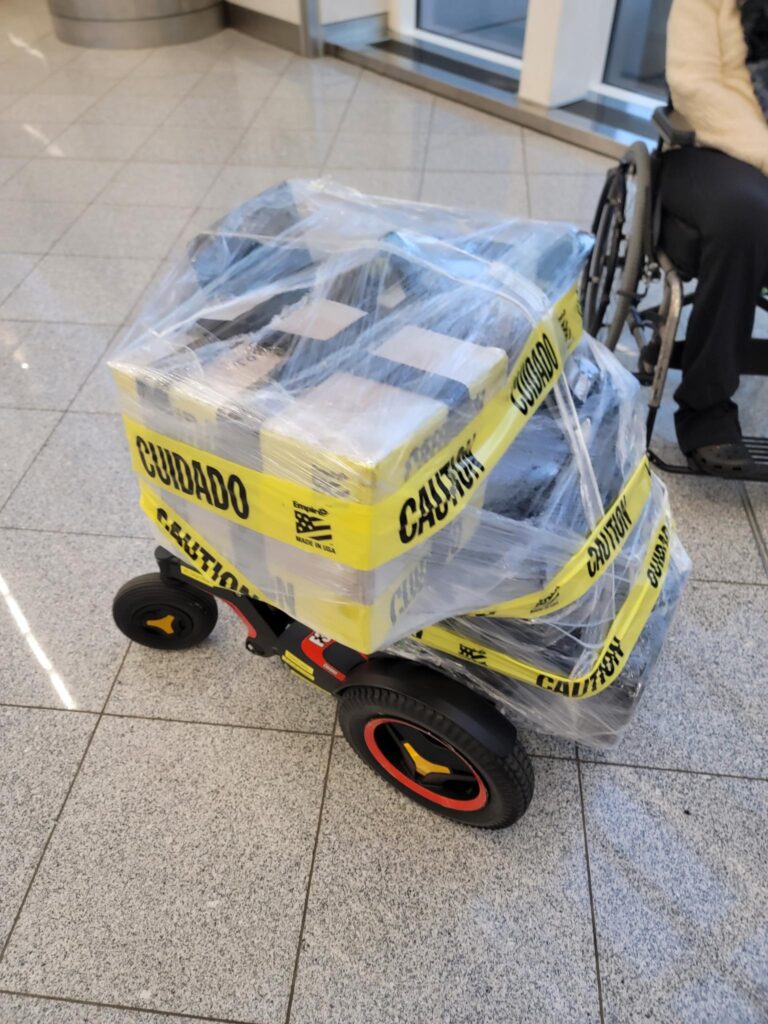
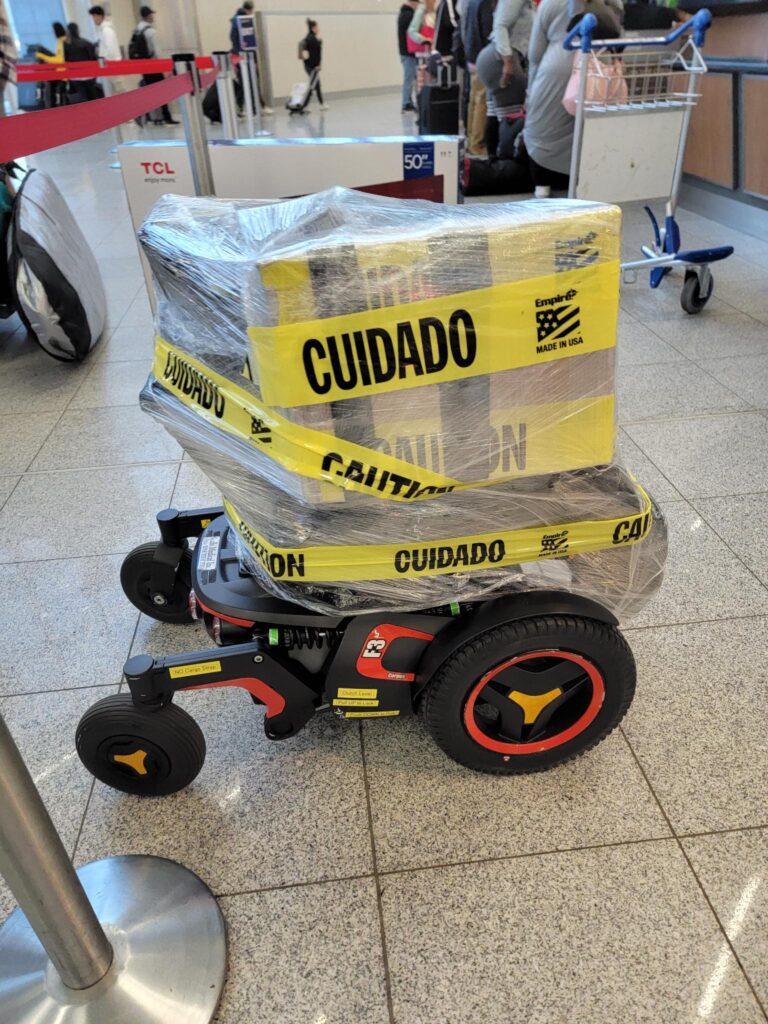
Wheelchair Preparation Prior to Departure
When I arrived to the International Atlanta Airport for departures, I had my chair all wrapped up and ready to go. I then learned something really interesting. International departures in Atlanta do not have a large x-ray machine to put the wheelchair through. Therefore, you have to manually roll over your wheelchair to a gentleman in the back who has to swab your wheelchair for bomb residue. The challenge with this is that they had to cut my entire wrapping job so to speak into a million pieces. The larger issue is that when they were done with that, and we did have more shrink wrap, is I was not allowed to touch any part of the wheelchair after they swabbed it for bomb residue.
I almost missed my flight, but thank goodness I had my brother there who literally directed this gentleman to wrap up my chair with a copious amount of tape as you can see below. It looked like a patch job, I was terribly nervous, but I had faith in my brother. It’s by sheer luck that we were able to stay in the room and direct this gentleman had a wrap up my chair again. Most people do not have this option.
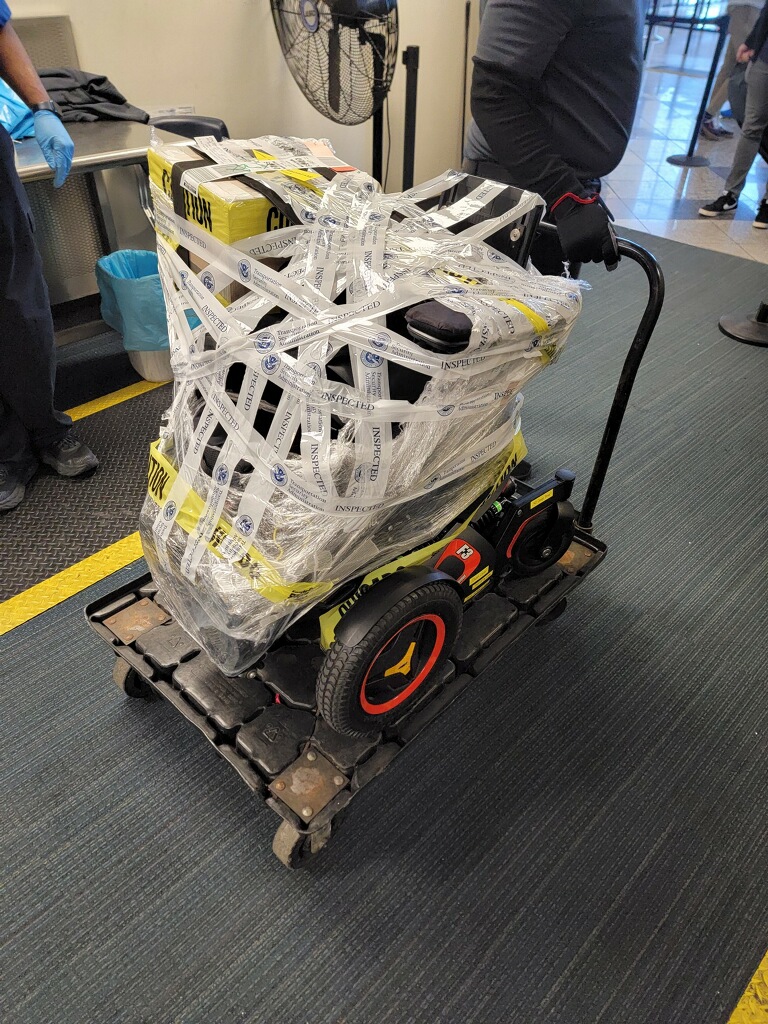
I arrived in Costa Rica and the chair was just fine. I was elated and excited to not have a broken chair for my adventure.
When Your Luck Turns
When we were leaving Costa Rica and in the international departure line with Delta, I spoke with a handful of individuals who assured me that the way I wrapped it will be just fine to go through the x-ray machine. I was overjoyed. I thought to myself “great, this flying thing is easy and I’ve created a great system.”
When I arrived at Atlanta it was about 9 PM at night and I had to wait for the better part of an hour for my wheelchair to be released as I needed a customs agent because the chair was sitting in a room for explosive materials. I don’t know why.

The moment I saw my chair through the glass door my heart sank. I mean it really sank. I built this protective system like a brick “shit house,” pardon my language, but I did.
Everything was in pieces. How did they do this? I wasn’t privy to watching the process of my chair being unloaded from the plane.
The shrink wrap was cut, the straps from the footplate were taken off and not put back, the box housing the important and expensive controller unit was sideways and hanging on by a thread.
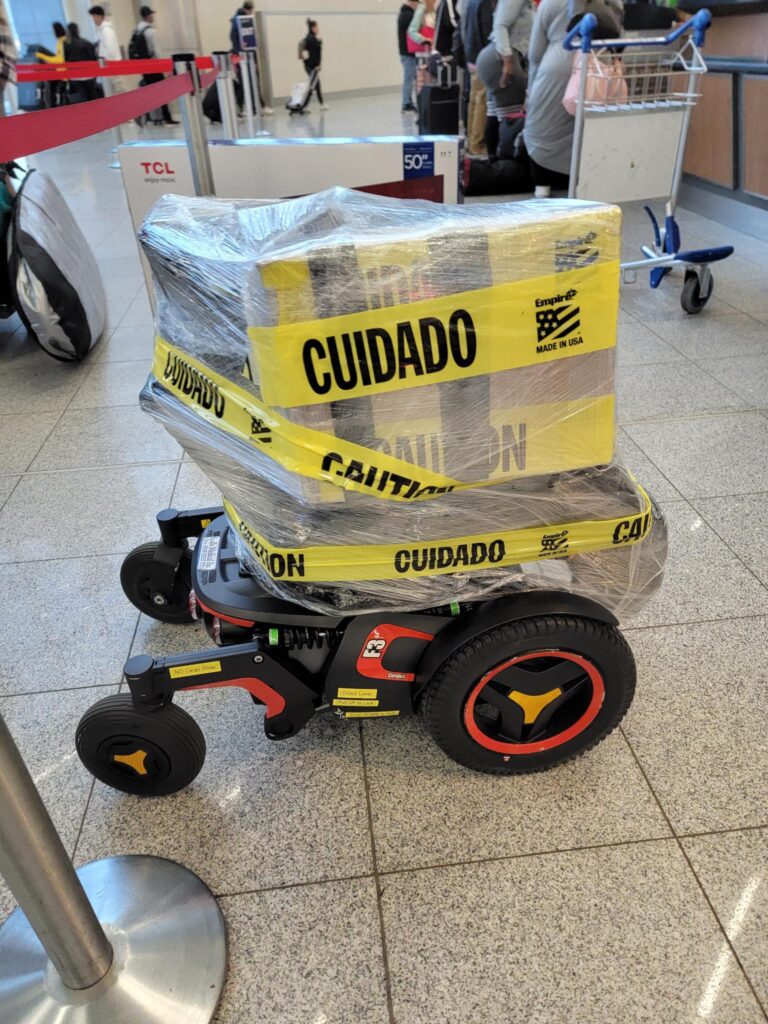
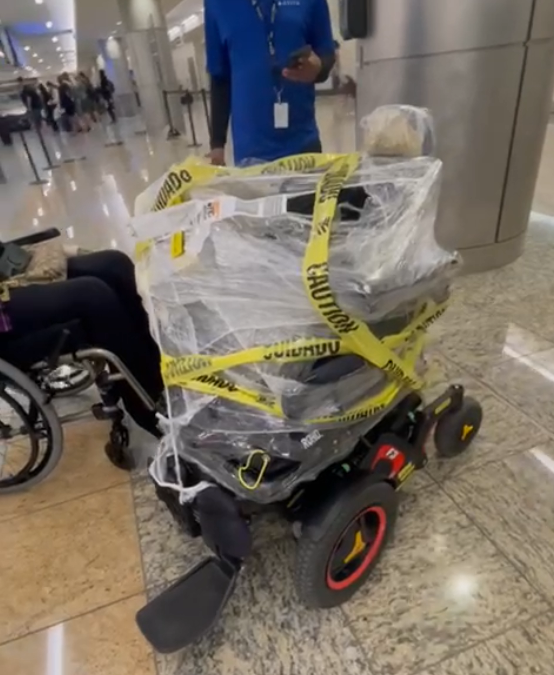
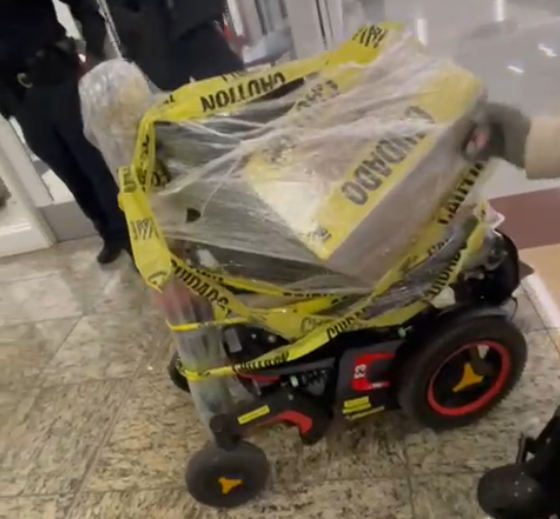
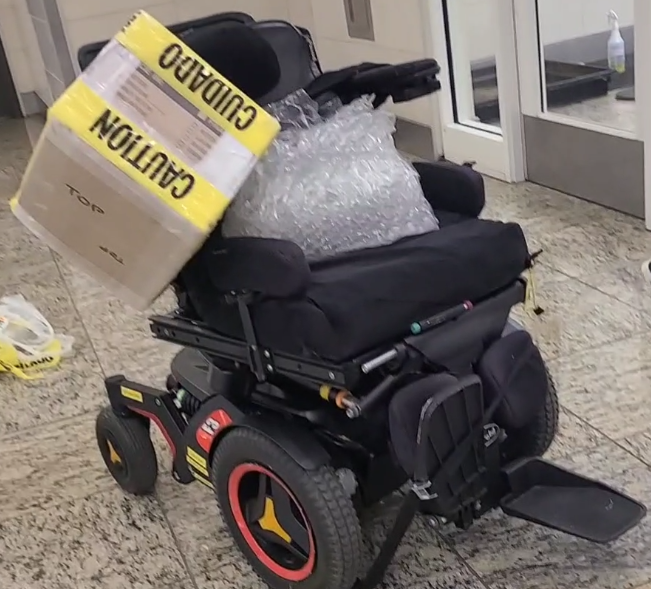
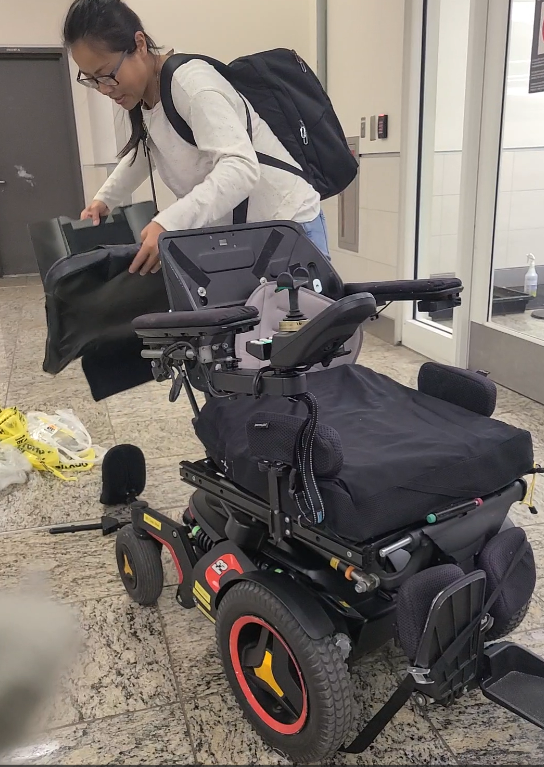
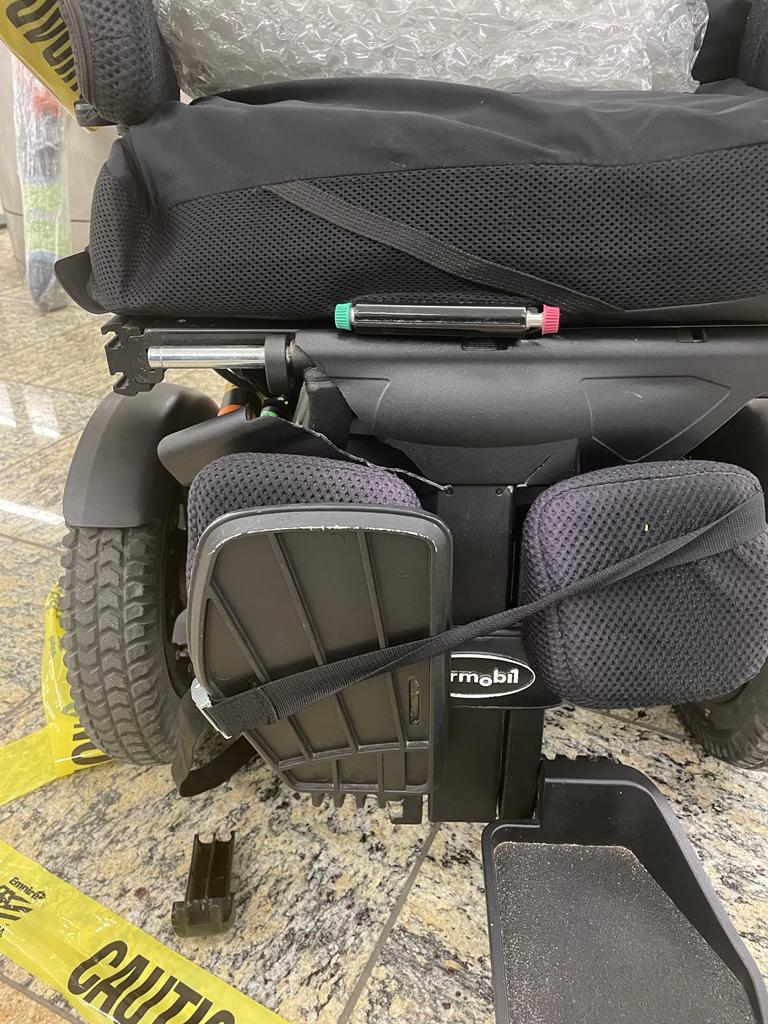
I didn’t know if the damage was cosmetic or if the chair would even turn on. I immediately told the Delta Employee that my chair is not the way I had left it and I have photos to prove it. Take pictures everyone!
He started taking photos with a worried look on his face, I started taking videos, and one of my dearest friends started helping me unravel what was left my packaging job.
Again, if all else failed I would’ve had a manual chair to back me up, but most do not. I then proceeded with the Delta claims agent to make a claim. This took hours. It was a wee hours of the night, but I was not leaving until I had every detail handled.
I’m going to leave aside the lack of training of the grounds crew of how they lifted me on and off the chair and damaged my shoulder because we’re focusing on equipment for today. This is another article, which I promise I will write in due time.
After unpacking my chair while filing the claim – my chair turned on. I caught a break. Most do not. I’m not sure if I was lucky or because of the copious amount of preparation I did that the damage ended up being minimal. It was pretty damaged, but cosmetic in nature. I could still use all the functions of my power wheelchair.
Lack of Knowledge
The claims folks I worked with in the airport were nice enough. They were not knowledgeable though. I asked him a series of questions, none of which he could actually answer. Most of their responses to my questions such as “what’s the actual process of getting a wheelchair fixed?” — “Who handles it?” — “How long does it take?” Most of the responses ended up with the last sentence being “I think.”
I was very polite because they did not break my chair and it was not their fault they were not trained properly by Delta or other commercial airlines for that matter. They just didn’t know. The only information I received was a claim number and a third party company that acts as an intermediary for Delta to fix damaged equipment. Unifi for Delta’s case.
The repair company is called Scoot Around. While waiting around the airport I looked them up and learned that their headquarters are actually in Canada. At the airport they told me that Scoot Around would come to my home with a claims specialist and assess the damage of my chair.
Not my book. There was no way I was having a third-party person who I was unfamiliar with assess I chair damage without extensive knowledge of complex rehab technology, customized power chairs and manual chairs.
I told them this was not an arrangement I was comfortable with and I am more than happy for Scoot Around agents to go to my Durable Medical Supplier and have an assessment with them as they know me and my chair quite well.
They did know if this would work or not work. I received their phone number and planned on calling them first thing in the morning. I left the airport tired, exhausted, and feeling the pain of thousands of others in my situation.
What Next?
With 4 hours of sleep, I woke up first thing in the morning and started to contact Delta Claims Agents and Scoot Around. I was very surprised, but heartened, to get a prompt response. I’m not sure if this is because I kind of put the Fear of God in them with my ability I have of making these issues public at the airport, but in any event, I started the process.
(After 4 hours in the airport – Image below)
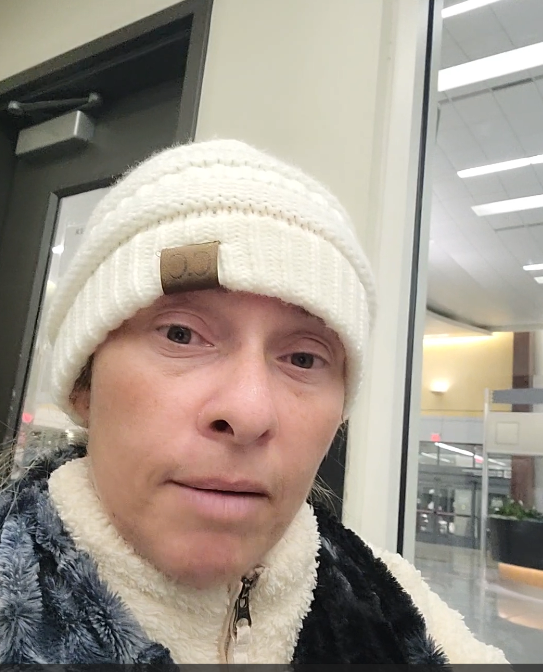
So, with Delta in particular, they contract with Scoot Around in Canada. It turns out they do offer you the ability to choose your service provider of choice. You then have your service provider (DME Company) assess your chair, file a claim, and submit a quote to Scoot Around.
Scoot Around reviews the quote, works with Delta Corporate, and then they make the decision if they will pay your claim or not, release of funds to Scoot Around, and then they pay your DME Company to fix the damages.
This cannot be understated, I am lucky. I am lucky because I have a great DME Company who is fast and efficient, and I have a personal relationship with. I am lucky because Delta got off very cheap. The damage was cosmetic and, well, they are keeping the invoice cost for the repairs under wraps. I found a very legal roundabout way to figure out how much they actually paid. Trust me, it was not even in the thousands of dollars.
Of course, Delta was going to settle my claim quickly because they were not smacked with a $30,000 bill for a brand-new power wheelchair if had they destroyed it completely. This is happened to dozens of my friends.
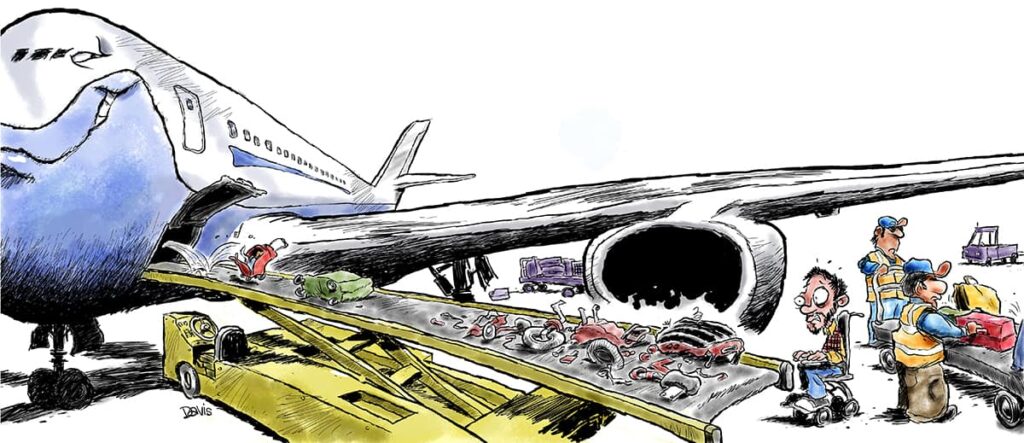
My wheelchair is currently getting repaired and should be done in a few days. This whole process took about 2 weeks, but I am painfully aware that this can take months. This is not acceptable because most of us have to use a loner chair that does not fit our body and can result in VERY serious secondary complications.
Going Global
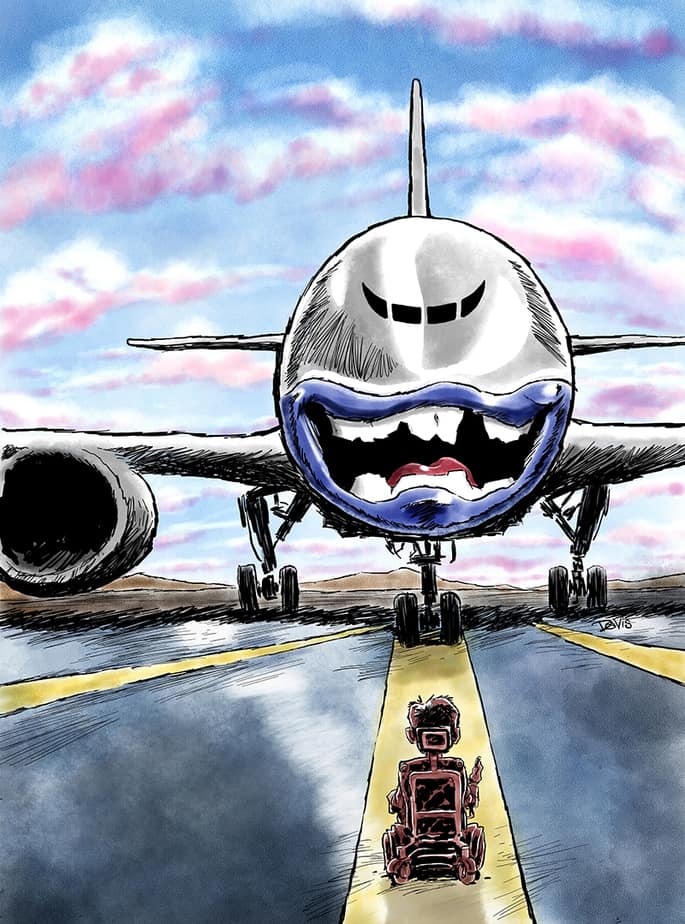
I worked with an investigative reporter here in North Carolina and we did a story on Delta. More specifically, on broken wheelchairs in the airline industry – such a hot issue right now. The story will air shortly as this is one of the major legislative issues I am working on with United Spinal with nearly 150 wheelchair users gathering in Washington, DC for Roll on Capitol Hill this coming June.
Ironically, it’s quite fortuitous timing my chair was damaged as I now understand the process better.
Do you know why I understand the process better? I just don’t give up. I’m pleasantly and sometimes aggressively persistent in these situations and I ask a million questions. It’s all about the questions you ask in order to get the right answers.
I’m still going back to Costa Rica next year and I’m just going to re-envision a solution that’s even more simple so I can further minimize potential wheelchair damage. It’s also TSA though. They slice and dice and don’t give it a second thought when trying to put your chair back together for transport.
This is an issue of education and advocacy. Then it is about turning that education into an actionable plan where we hold the airline industry accountable. Final step? Further legislation!
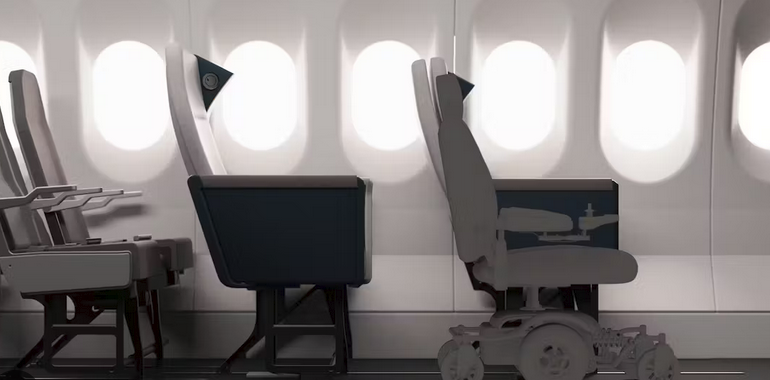
And on we go… Story to be continued! Although, in the glass half-full department we just had the most beautiful trip to Costa Rica. A trip of a lifetime!
